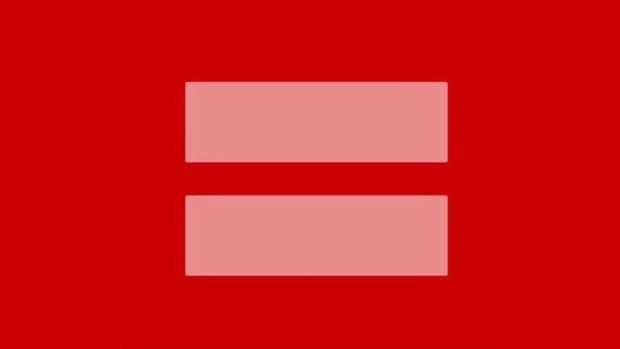This post analyses the likely effect of one of the key amendments to the Indecent Representation of Women Act, 1986 (IRW Act) which extends the law to online mediums. It argues that such an extension presents a real danger of prosecution of individuals and womens groups who rely increasingly on online activism to get their message out. (Full text of the IRW Act is available here)

“Pink Mafia” generously licensed by Andrew Brecaft under a CC BY-NC-SA 2.0 license
Background
This parliament session much debate was focused on improving womens safety. This saw the passage of the Criminal Law (Amendment) Act, 2013 making changes in various existing statutes related to sexual offenses. (Click here for a background on the Criminal Law (Amendment) Act, 2013)
Predating this enactment was another legislative measure which sought to further the interests of women. This was in the form of amendments proposed to the IRW Act which did not pass legislative muster but remains pending in parliament. The reasons for the proposed amendments were contained in a statement put out in a Press Information Bureau release.
It stated that, “over the years, technological revolution has resulted in the development of newer forms of communication such as internet and satellite based communication, multi-media messaging, cable television etc. It has, therefore, become imperative to widen the scope of the law so as to cover such forms of media, on one hand, and to strengthen the existing safeguards to prevent indecent representation of women through any such form.”
It betrayed a certain nervousness when it went on to say, “extensive consultations have been held with stakeholders including lawyers and civil society organizations on the draft Bill, before its finalization.” (Full Press Release dated 11th October, 2012 available here)
Even if one does not attribute motives, this language did point to an obvious conflict between an extension of the IRW Act and civil liberties. It is my belief that these civil liberties, will in future involve prosecutions of persons and womens groups who challenge prevailing social mores.
Lets have a closer look at the provisions and changes suggested by the IRW Amendment Bill.
Proposed amendments
As the press release alludes the IRW Amendment Bill, 2012 aims to amend certain provisions of the IRW Act, 1986 to extend it to digital mediums. (Full Text of the IRW Amendment Bill, 2012 is available here)
The thrust of the IRW Act, 1986 has been to penalize advertisers and publishers who hope to profit from the objectification of women. Here it would seem only natural for the same law to apply to paper and webpages. Medium neutrality has been a consistent theme in the civil liberties debate, where much criticism from commentators has been as to the absence of agnosticism in the law. So its only natural for the IRW Act to be extended online for the regulation of content to remain consistent across mediums.
In keeping with this objective the IRW Amendment Bill, 2012 in the amendments proposed to Sec. 3 and Sec. 4 propose the addition of the terms, “electronic or in any form”. Sec. 3 contains the prohibition of advertisements containing indecent or derogatory representation of women and Sec. 4 contains the Prohibition of publication, transmission, distribution of materials containing indecent representation of women.
Over and above this, there are two other key additions proposed by the amendments. Firstly the definition of “indecent representation of women” is expanded, thereby bringing more content under the ambit of the law. This has been notably done by the addition of a traditional obscenity prong (such as one under Section 292 of the Indian Penal Code) to indecency. The law generally regarded, indecency and obscenity to be distinct offenses. However, the amendment proposes to insert obscenity under the existing definition of indecency thereby making it broader. Secondly, the penalties for contravention of Sec. 3 or 4, under the law have been hiked from a minimum period of imprisonment of two years to three years.
A question which arises is the law liable to abuse. Inextricably linked is the objection, aren’t all laws liable to abuse ? Whats so special here ?
Notable precedent
The history of prosecutions under the IRW Act has been vexed. The torrent of advertisements and newspaper supplements which objectify women shows that the Act has been inefficient in serving its purpose. Separate from its failure to morally fasten portrayals of women a bothersome pattern of its abuse has emerged.
This abuse has been apparent through several cases which demonstrate how broadly the law is framed and how it is invoked. Though given most of the cases are ultimately dismissed, the legal process, or as it is stated politely, the rigors of law are coercive. Ultimate vindication is often a Pyhrric victory obtained through years of exhausting an appeals process. Each one of the instances below demonstrates this point.
For instance take the case of Babban Prasad Mishra v. P.S. Diwan (2006 CriLJ 3263), where advertisements of a Kama Sutra Capsule were showed with a woman lying in the lap of a man. The judge quashing the criminal case which was filed against the Petitioner, noted that no obscenity or indecency was involved in the advertisement. The point to take away from this case is that a pictorial representation of a woman lying in the lap of a man was an adequate threshold for the commencement of a legal prosecution.
Now lets come to two cases of where the abuse of the IRW Act was noticed by the Courts. Both of them involve female actors.
The first case titled as Shilpa Shetty v. T. Dakshinamurthy, where the Madras High Court quashed two non bailable warrants issued against Shilpa Shetty on a complaint made by a advocate stating that certain pictures of her published in a local daily violated the IRW Act. The court stated that since the IRW Act applied to publishers, and not the models/actors in the picture the prosecution could not be sustained. Even while doing this the same benefit was not extended to the publisher of the local daily and the trial proceeded against him. Kindly consider the ease with which a non-bailable warrant can be issued by a district court acting under the IRW Act against a out of state defendant.
The second and the more sensational case is titled as Khusboo v. Kanniammal, where the actor, Khushboo, had to go up till the Supreme Court to get the multiple criminal complaints filed against her quashed. The complaints under the IRW Act arose from her comments advocating more bodily autonomy for women in the context of pre-maritial sex.
The Supreme Court quashing the charges against her stated that the IRW Act, “was enacted to punish publishers and advertisers who knowingly disseminate materials that portray women in an indecent manner. However, this statute cannot be used in the present case where the appellant has merely reffed to the incidence of pre-maritial sex in her statement which was published by a news magazine and subsequently reported in another periodical. It would defy logic to invoke the offenses mentioned in this statute to proceed against the appellant, who cannot be described as an ‘advertiser’ or ‘publisher’ by any means.”
This judgment came after a similar non-bailable warrant was issued against Khushboo and she had to surrender before a court to take bail. One of the bail conditions imposed by the Court prevented her from talking to the media about the case. Even people who supported did not escape the legal process. Suhasini Mani Rathnam, who had defended Khushboo, had four cases filed against her.
Digital activism, not a hypothetical
Call it slacktivism or any other deprecatory term, the use of Internet as a medium for activism is increasing. The most recent instance is extensive use of social networks by millions of users to change their display pictures showing support for LGTB rights to coincide with the US Supreme Court hearings on gay marriage.

Indian NGO’s and womens groups are not oblivious to this. Most of them maintain active twitter accounts and facebook pages. They often post images and content challenges the social bounds which dictate tight moral crosets for women. An effective way to get such a message is through pictures.
These pictures often contain partial nudity or images which would certainly run into trouble with mandates of IRW Act if it was to be extended online. If not an ultimate conviction, the threat of the pendency of a criminal case is a certainty.
Consider the following examples.
- The Delhi Slutwalk Facebook Page has a panned out picture of nude women protesting against AFSPA outside a Assam Rifles Barrack.
- The Feminist India Facebook Page has a picture of the same protest, however the protesting and partially nude women are this time covered by banner which protests AFSPA.
- The GotStared.At Facebook Page has a picture of a womans legs, questioning patriarchal male attitudes about the correlation skirt length and sexual consent.
Its not these pages in isolation or the extension of the IRW Act which poses a threat of prosecution. It is the growing constituency of the offended, many of whom are the self arrogated custodians of Indian values. This has deeper links with a resurgence of right wing nationalism which is as many say disproportionately represented in online media encouraging a slur of “internet hindus”. An extended IRW Act would certainly provide a ready powder keg to such an easily inflammable group.
The short of it can be summarized in two rhetorical questions.
Will the IRW Act with its 10 sections dent patriarchy and objectification of women? It might.
Will the same 10 sections pose a risk for groups and individuals espousing the rights of women ? They certainly will.
Not without prejudice
My natural disposition revolts against any form of regulation on pure speech. I state this bias since it will always be present in my writing.
I believe policing speech is often going after the lowest hanging fruit which leads to greater deprivations of liberty. Even when well intentioned, doing it through law is plucking the fruit even without waiting for it to ripen. There are limits to law. By itself it is merely a black letter printed on paper. Inefficiently enforced by the police and courts. The social mores stay even in the existence of laws which mandate to the contrary.
A law preventing patriarchal speech does not change patriarchy by itself.
However, I will not deal with the free speech right which deserves its own post. If I get time, I intend to do it in coming week. In the post I will object to the proposed amendments on broader grounds of them being obsolete/superfluous and endangering the level of freedom of speech enjoyed online. Not found of hyperbole, but the way the amendments to the IRW Act are framed presently, it may may be the progeny of 66A.
Finally, please point out if I am missing something. I am not saying this to be polite, I am unfamiliar with literature on gender studies and feminism. So by all means, criticize and correct me. I look forward to a discussion and gaining a better perspective on this.